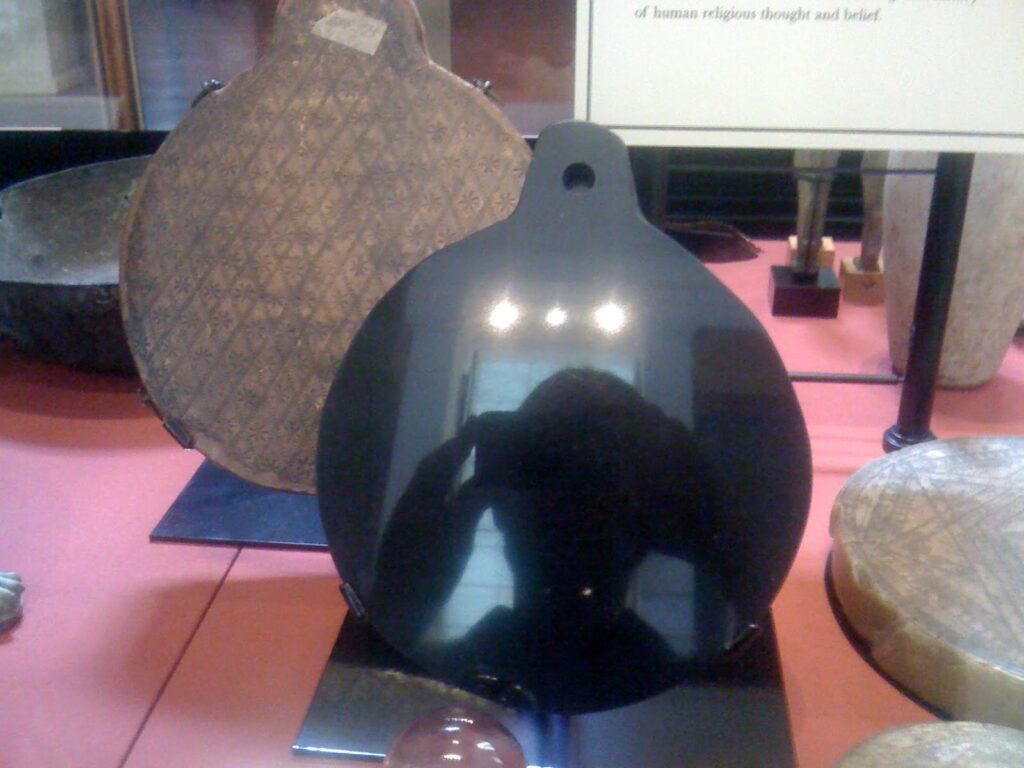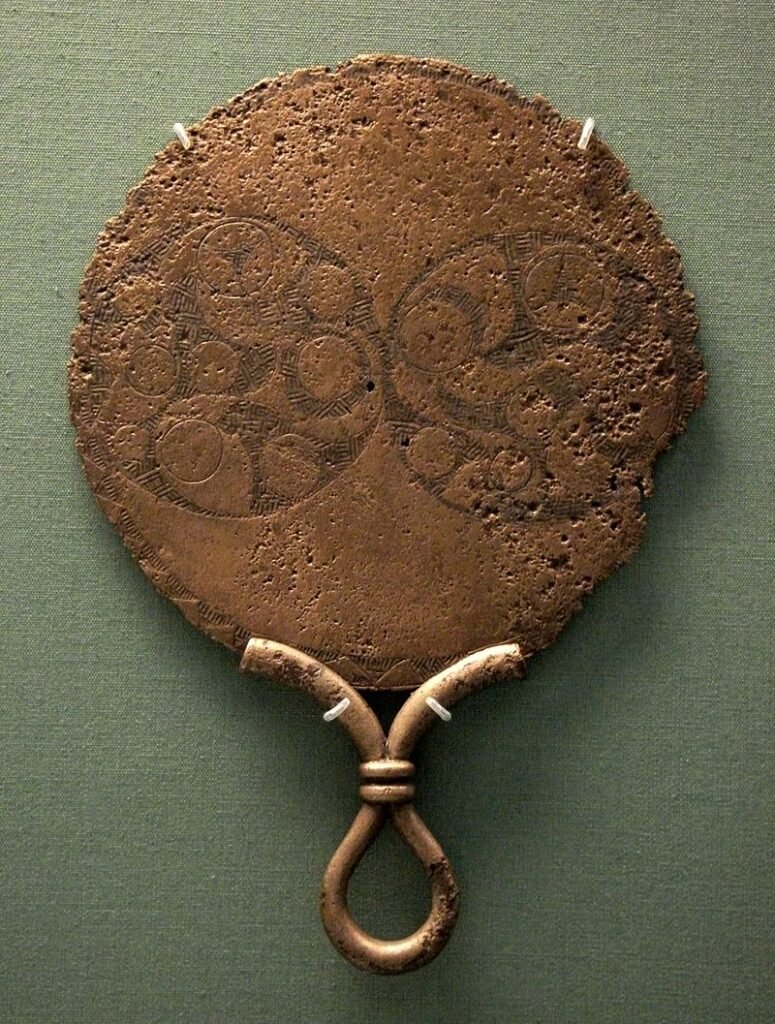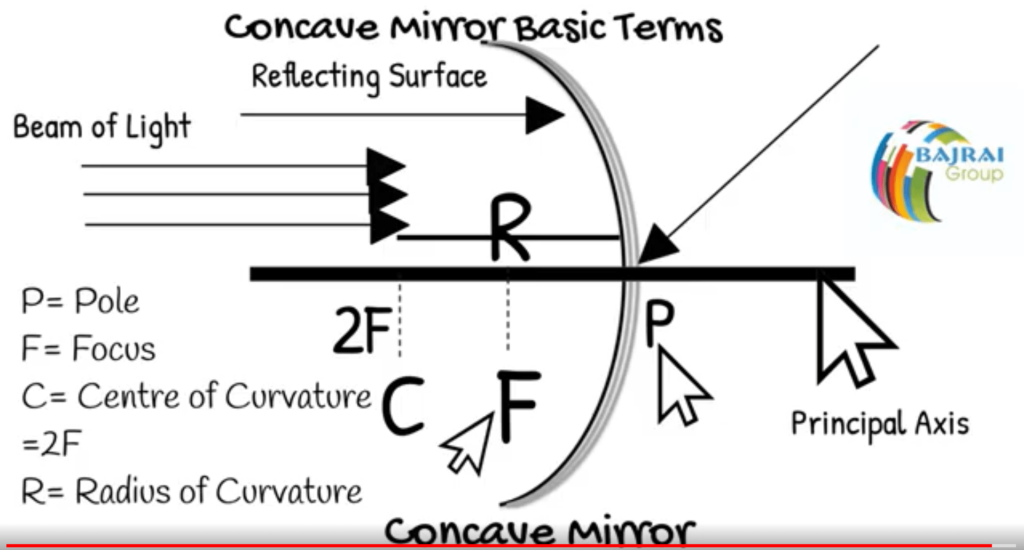What is a Spherical Mirror?
A Spherical mirror is a mirror with a curved reflecting surface, it has two surfaces either concave or convex. It is also called Curved mirrors. In modern-day, spherical mirrors examples are rearview mirrors of bikes and cars, shaving mirrors, makeup mirrors, and dentist mirrors. All these are examples of Spherical mirrors used nowadays.

When we talk about the history of spherical mirrors in human civilization, we can sum up in the following topics
Brief History of Spherical Mirrors in Human Civilization
- Pools of Dark water or Still water
- Obsidian Mirrors around 6000 BC were found in modern-day Turkey (Anatolia)
- Polished Stone mirrors
- Bronze and Copper mirrors
- Mirrors made of alloys
- Glass mirrors backed with gold leaf
- Crude mirrors
- Parabolic Mirrors
- Ibn Sahl and Ibn Al-Haytham
- Silver-Mercury amalgam
- Amalgam of tin and mercury
- Saint-Gobain Factory
- Silver-Glass Mirrors
- Modern Day Mirrors
Other Class 10th Physics Projects
The History of spherical mirrors in human civilization
1. Pools of Dark Water:
In history, the first spherical mirrors used by humans were the water collected in the utensils or the pools of water. People used pond water as the source of spherical mirrors in the early ages of human civilization. Then came the Obsidian mirrors.
2. Obsidian Mirrors:
After the Pools of Dark Water, Obsidian Mirrors comes into play.
Obsidian, it occurs as a natural glass formed by the rapid cooling of viscous lava from volcanoes.

Around 6000 BC, Obsidian Mirrors were found in Turkey, known as Anatolia.
3. Polished Stone Mirrors:
The earliest mirrors used by humans were Polished Stone mirrors like the above-discussed obsidian mirrors. That age is also called the stone age.
4. Bronze and Copper Mirrors:
Around 2000 BC, China manufactured the Bronze Mirrors. Qijia culture produced the earliest Bronze and Copper Mirrors.

5. Mirrors made of Alloys:
India and China have the privilege of making Mirrors from metal mixtures which are called Alloys. They manufactured mirrors using metal mixtures like copper and tin speculum metal. This was hard to produce in old times, so these mirrors were only used by Wealthy people.
6. Glass Mirrors Backed with Gold Leaf:
Glass mirrors coated with metals were invented in Sidon (now Lebanon). The Roman Author Pliny debated about the Glass mirrors backed with Gold Leaf in his Natural History which was written around 77 CE.
7. Crude Mirrors:
The Roman has the credit of developing the technique for creating Crude mirrors. They used to coat blown glass with molten lead.
8. Parabolic Mirrors:
Ibn Sahl the Physicist has the credit for discovering the Parabolic Mirrors.
9. Ibn Sahl and Ibn Al-Haytham:
The Islamic Golden age also plays an important part in the history of Spherical Mirrors in Human Civilization. Ibn Sahl and Ibn Al Haytham – the Physicist of the Islamic Golden age deal with Parabolic Mirrors, Lenses, etc.
Ibn Sahl
The Physicist, Ibn Sahl uses the laws of refraction to derive the lens shapes that focus light. He deals with Parabolic Mirrors, Ellipsoidal Mirrors, Biconvex lenses, etc.
Ibn Al Haytham
The other one of the Islamic Golden Age is Ibn Al-Haytham a famous Mathematician, debated on Concave and Convex mirrors by various experiments using laws of reflection, refraction, etc.

10. Silver-Mercury amalgam:
Around 500 CE in China, People Began making silver-mercury amalgam-coated mirrors.
11. Amalgam of tin and mercury:
During the time of the Renaissance, Europe started making mirrors with an amalgam of tin and mercury.
12. Saint-Gobain Factory:
The Saint-Gobain Factory of France was an important manufacturer of Spherical mirrors at that time.
13 Silvered-Glass Mirrors:
silvered-glass mirrors were invented in 1835, by Justus von Liebig- a German chemist. In this process, the thin silver is deposited on one side of the mirror. This process of Silvered-glass mirror is adapted for the bulk manufacturing of mirrors and it is produced at affordable prices.
14. Modern-Day Spherical Mirrors:
At last, there come modern-day spherical mirrors
Modern-day Spherical Mirrors are of two types
- Concave Mirror and
- Convex Mirror
a) A Concave Mirror is a mirror in which the reflecting surface is curved inwards. It is also called a converging mirror as all the reflected light rays in a Concave mirror are converged at a point.

b) Convex Mirror: The Other one is Convex Mirror, is a mirror in which the reflecting surface is curved outwards. It is also called a diverging mirror as all the reflected right rays diverged from the reflecting convex surface.

The common terms for Concave and Convex mirrors are
Pole: Centre point of spherical Mirror
Focus: A point on the Principal axis where the light rays which are parallel to the Principal Axis converge or diverges after reflecting from the spherical surface
Centre of Curvature: It is the centre of the sphere from which a spherical mirror is made
The radius of Curvature: Distance between Pole and Centre of Curvature
Principal Axis: The Line joining the Pole and Centre of Curvature
Sources: Bajrai Online Solutions completed this project with the help of the QnAdotOrg, wikipedia and other websites

